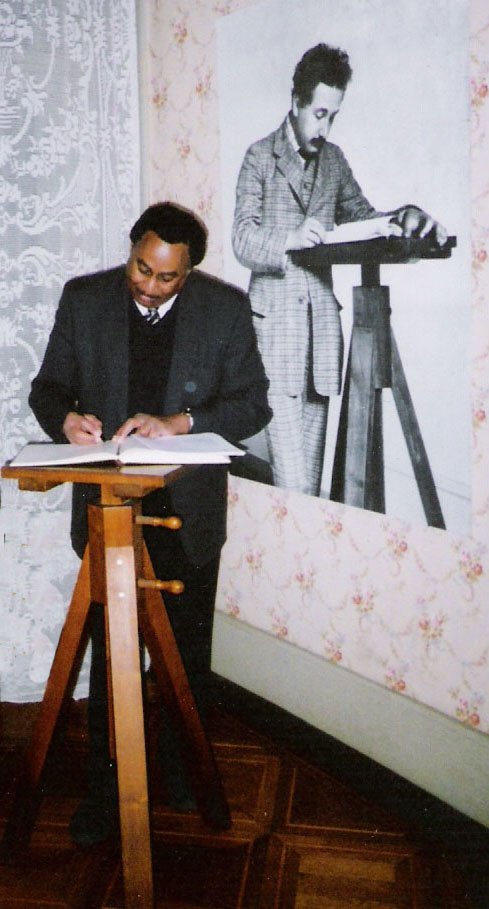|
|
| |
Summary of Research Activity
Ronald L. Mallett
Ph.D., Professor of Physics
University of Connecticut
Gravitational Field of Circulating Light Beams
*
In Einstein's general theory of relativity, both matter
and energy can create a gravitational field. This means
that the energy of a light beam can produce a gravitational
field. My current research considers both the weak and
strong gravitational fields produced by a single continuously
circulating unidirectional beam of light. In the weak
gravitational field of a unidirectional ring laser,
it is predicted that a spinning neutral particle, when
placed in the ring, is dragged around by the resulting
gravitational field.
[R. L. Mallett, "Weak gravitational field of the
electromagnetic radiation in a ring laser",
Phys. Lett. A 269, 214 (2000)]. [pdf]
For the strong gravitational field of a circulating cylinder of light, I have found new exact solutions
of the Einstein field equations for the exterior and interior gravitational fields of the light cylinder.
The exterior gravitational field is shown to contain closed timelike lines.
The presence of closed timelike lines indicates the possibility of
time travel into the past. This creates the foundation
for a time machine based on a circulating cylinder of
light. [R. L. Mallett, "The gravitational field of a circulating
light beam",
Foundations of Physics 33, 1307 (2003)]. [pdf]
|
| |
Cosmic Degenerate
Bose-Einstein Dark Matter
In collaboration with Mark P. Silverman of the Department
of Physics of Trinity College, a general relativistically
covariant theory of a self coupled scalar field has
been developed as a possible solution of the missing
mass problem. We have shown that spontaneous symmetry
breaking of a neutral scalar field coupled to gravity
leads directly to ultra-low mass bosons, with a critical
temperature far above the temperature of the universe,
for most of its duration. The particles are therefore
expected to condense into a degenerate Bose Einstein
gas, providing a potential candidate for nonbaryonic
nonluminous matter [M.P.
Silverman and R.L. Mallett, "Cosmic degenerate matter:
a possible solution to the problem of missing mass,"
Class. Quantum Grav. 18, L37 (2001); M. P. Silverman
and R. L. Mallett, "Dark matter as a cosmic Bose-Einstein
condensate and possible superfluid",
Gen. Rel. Grav. 34, 633 (2002)].
|

Ronald Mallett on a visit to the
Einstein House in Bern, Switzerland
|
|
|
|
|
|
Additional information can also be obtained by a google search for Ronald L. Mallett
1998-2007
Department of Physics, University of Connecticut
This page was last updated on February 11, 2007
Click on link for:
UConn Physics home page of Ronald Mallett
|
|